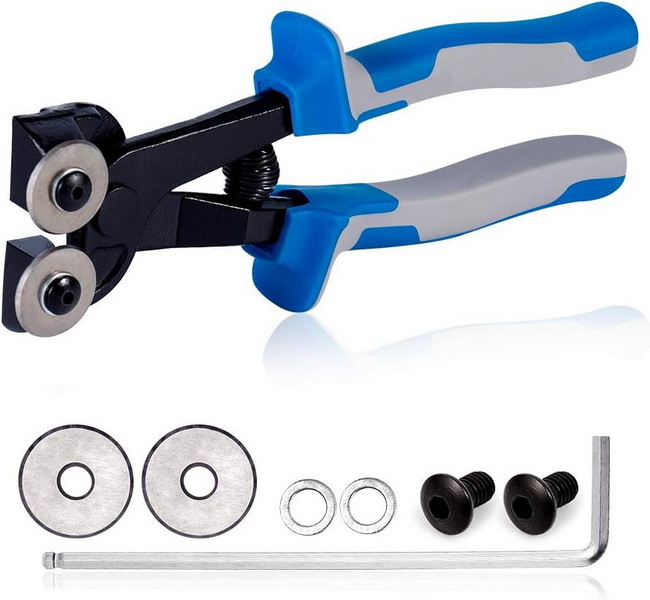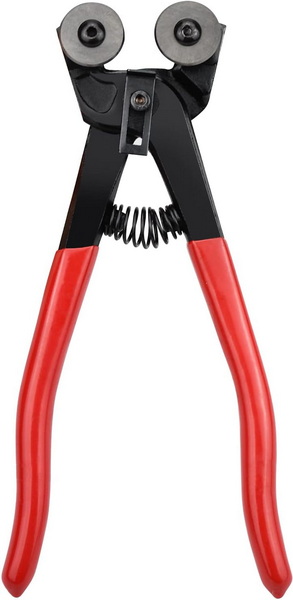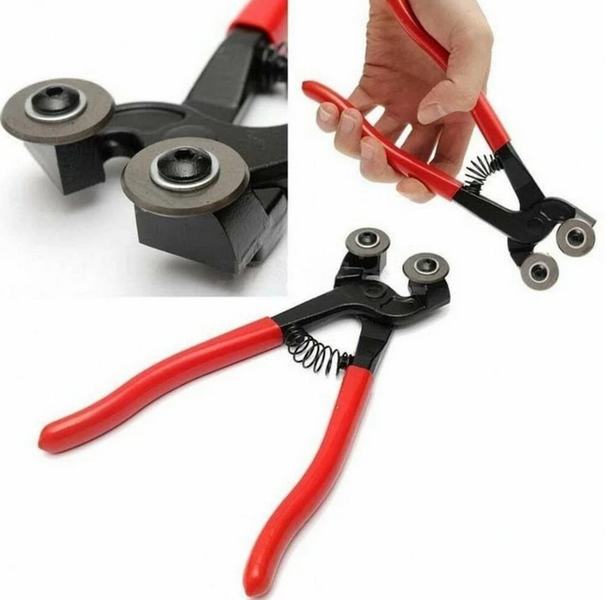Content Menu
● Introduction
● Understanding Roller Nippers
>> Components of Roller Nippers
>> Types of Materials Suitable for Cutting
● Benefits of Carbide Wheels
>> Durability and Longevity
>> Precision Cutting
>> Cost-Effectiveness
● Choosing the Right Roller Nipper
>> Size
>> Grip
>> Wheel Type
>> Brand Reputation
>> Price
● Best Practices for Using Roller Nippers
>> Step-by-Step Guide on How to Use Roller Nippers
>> Tips for Achieving Clean Cuts
● Maintenance and Care
>> How to Clean and Maintain Roller Nippers
>> Signs That Indicate When to Replace the Carbide Wheels
● Safety Considerations
>> Essential Safety Tips When Using Roller Nippers
>> Recommended Protective Gear
● Conclusion
● Related Questions
>> 1. What types of projects are best suited for roller nippers with carbide wheels?
>> 2. How do I know if my roller nipper needs to be replaced?
>> 3. Can I use roller nippers on materials other than glass and tile?
>> 4. What is the difference between roller nippers and traditional tile cutters?
>> 5. How can I improve my cutting technique with roller nippers?
Introduction
When it comes to crafting beautiful glass and mosaic projects, having the right tools is essential. One of the most important tools in your arsenal is the roller nipper with carbide wheel. This specialized cutting tool is designed to make precise cuts in glass and tile, allowing artists and DIY enthusiasts to create intricate designs with ease. In this guide, we will explore how to choose the right roller nipper for your glass and mosaic projects, ensuring you achieve the best results every time.

Understanding Roller Nippers
Roller nippers are specialized cutting tools that feature a carbide wheel, which is known for its durability and sharpness. These tools are designed to score the surface of glass or tile, allowing for clean breaks along the scored line. Unlike traditional nippers, roller nippers provide a more controlled cutting experience, making them ideal for detailed work in glass and mosaic projects.
Components of Roller Nippers
A typical roller nipper consists of several key components:
- Carbide Wheel: The cutting edge of the nipper, made from tungsten carbide, which is known for its hardness and longevity.
- Handles: Ergonomically designed for comfort and grip, allowing for better control during cutting.
- Pivot Point: The mechanism that allows the handles to move together, applying pressure to the carbide wheel against the material being cut.
Types of Materials Suitable for Cutting
Roller nippers with carbide wheels are versatile tools that can cut through various materials, including:
- Glass: Perfect for stained glass projects, glass mosaics, and decorative glass art.
- Ceramic Tiles: Ideal for home improvement projects, such as tiling floors or backsplashes.
- Mosaic Tiles: Great for creating intricate mosaic designs, allowing for precise cuts in small pieces.
Benefits of Carbide Wheels
Carbide wheels are a popular choice for roller nippers due to their numerous advantages:
Durability and Longevity
Carbide is significantly harder than steel, which means that carbide wheels can withstand more wear and tear. This durability translates to a longer lifespan for your roller nipper, making it a cost-effective investment for serious crafters.
Precision Cutting
The sharpness of carbide wheels allows for clean, precise cuts. This is especially important in glass and mosaic projects, where even the slightest imperfection can affect the overall design.
Cost-Effectiveness
While carbide nippers may have a higher upfront cost compared to traditional nippers, their longevity and performance make them a more economical choice in the long run. You won't need to replace them as frequently, saving you money over time.
Choosing the Right Roller Nipper
When selecting a roller nipper for your glass and mosaic projects, consider the following factors:
Size
The size of the roller nipper is crucial for achieving the best results. Smaller nippers are ideal for intricate work, while larger nippers can handle bigger pieces of glass or tile. Choose a size that fits comfortably in your hand and allows for precise control.
Grip
Look for nippers with ergonomic handles that provide a comfortable grip. This is especially important for extended use, as a good grip will reduce hand fatigue and improve accuracy.
Wheel Type
While carbide wheels are the most common, some nippers may feature different types of wheels. Ensure that the nipper you choose has a high-quality carbide wheel for optimal performance.
Brand Reputation
Consider purchasing from reputable brands known for their quality tools. Research customer reviews and testimonials to gauge the performance and reliability of the nippers you are considering.
Price
While it's tempting to go for the cheapest option, investing in a high-quality roller nipper will pay off in the long run. Look for a balance between affordability and quality to ensure you get the best value for your money.

Best Practices for Using Roller Nippers
To achieve the best results with your roller nipper, follow these best practices:
Step-by-Step Guide on How to Use Roller Nippers
1. Prepare Your Workspace: Ensure your workspace is clean and well-lit. Gather all necessary materials, including your roller nipper, glass or tile, and safety gear.
2. Measure and Mark: Use a ruler to measure the desired length of your cut. Mark the line with a pencil or a glass marker for accuracy.
3. Score the Glass or Tile: Position the carbide wheel at the start of your marked line. Apply gentle pressure and roll the nipper along the line, scoring the surface. Avoid pressing too hard, as this can lead to chipping.
4. Break the Material: After scoring, place the glass or tile on a flat surface with the scored line hanging over the edge. Apply gentle pressure downward to break the material along the scored line.
5. Smooth the Edges: Use a glass grinder or sandpaper to smooth any rough edges after cutting.
Tips for Achieving Clean Cuts
- Always score in one continuous motion to avoid uneven cuts.
- Use a straight edge as a guide for longer cuts.
- Practice on scrap pieces before working on your final project to build confidence.
Maintenance and Care
Proper maintenance of your roller nipper will ensure its longevity and performance:
How to Clean and Maintain Roller Nippers
- Regular Cleaning: After each use, wipe the carbide wheel with a clean cloth to remove any debris or residue.
- Lubrication: Occasionally, apply a drop of machine oil to the pivot point to keep the nipper functioning smoothly.
- Storage: Store your roller nipper in a protective case or pouch to prevent damage to the carbide wheel.
Signs That Indicate When to Replace the Carbide Wheels
- Dullness: If you notice that the nipper is not cutting as effectively, it may be time to replace the carbide wheel.
- Chipping: Inspect the wheel for chips or cracks, which can affect performance and safety.
Safety Considerations
Using roller nippers requires attention to safety to prevent injuries:
Essential Safety Tips When Using Roller Nippers
- Wear Protective Gear: Always wear safety glasses to protect your eyes from glass shards and gloves to protect your hands.
- Work in a Well-Lit Area: Ensure your workspace is well-lit to see your cutting line clearly.
- Keep Your Workspace Organized: A clutter-free workspace reduces the risk of accidents.
Recommended Protective Gear
- Safety Glasses: To shield your eyes from flying debris.
- Cut-Resistant Gloves: To protect your hands from sharp edges.
- Dust Mask: If you are working with materials that create dust, such as ceramic tiles.
Conclusion
Choosing the right roller nipper with carbide wheel for your glass and mosaic projects is crucial for achieving precision and quality in your work. By understanding the components, benefits, and best practices associated with roller nippers, you can make an informed decision that enhances your crafting experience. Remember to prioritize quality, comfort, and safety when selecting your tools, and you will be well on your way to creating stunning glass and mosaic art.

Related Questions
1. What types of projects are best suited for roller nippers with carbide wheels?
Roller nippers with carbide wheels are ideal for glass art, mosaic designs, and ceramic tile projects, allowing for precise cuts and intricate designs.
2. How do I know if my roller nipper needs to be replaced?
Signs that your roller nipper needs replacement include dullness in cutting performance, visible chips or cracks in the carbide wheel, and difficulty in achieving clean cuts.
3. Can I use roller nippers on materials other than glass and tile?
While roller nippers are primarily designed for glass and tile, they can also be used on other materials like acrylic and certain plastics, depending on the wheel's sharpness.
4. What is the difference between roller nippers and traditional tile cutters?
Roller nippers provide more control and precision for intricate cuts, while traditional tile cutters are better suited for straight cuts on larger tiles.
5. How can I improve my cutting technique with roller nippers?
Practice scoring in one continuous motion, use a straight edge for guidance, and ensure your workspace is well-lit to improve your cutting technique with roller nippers.
















